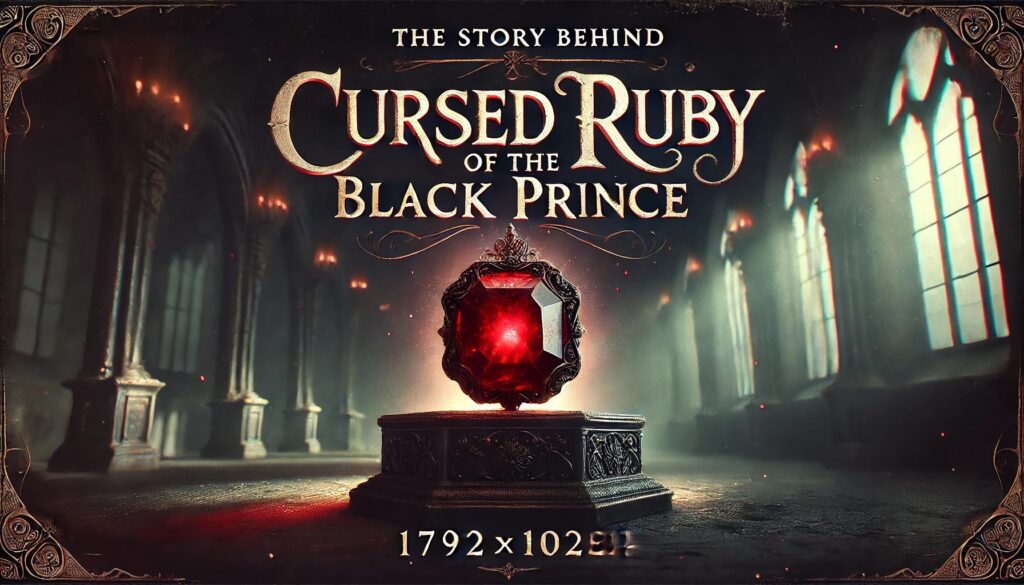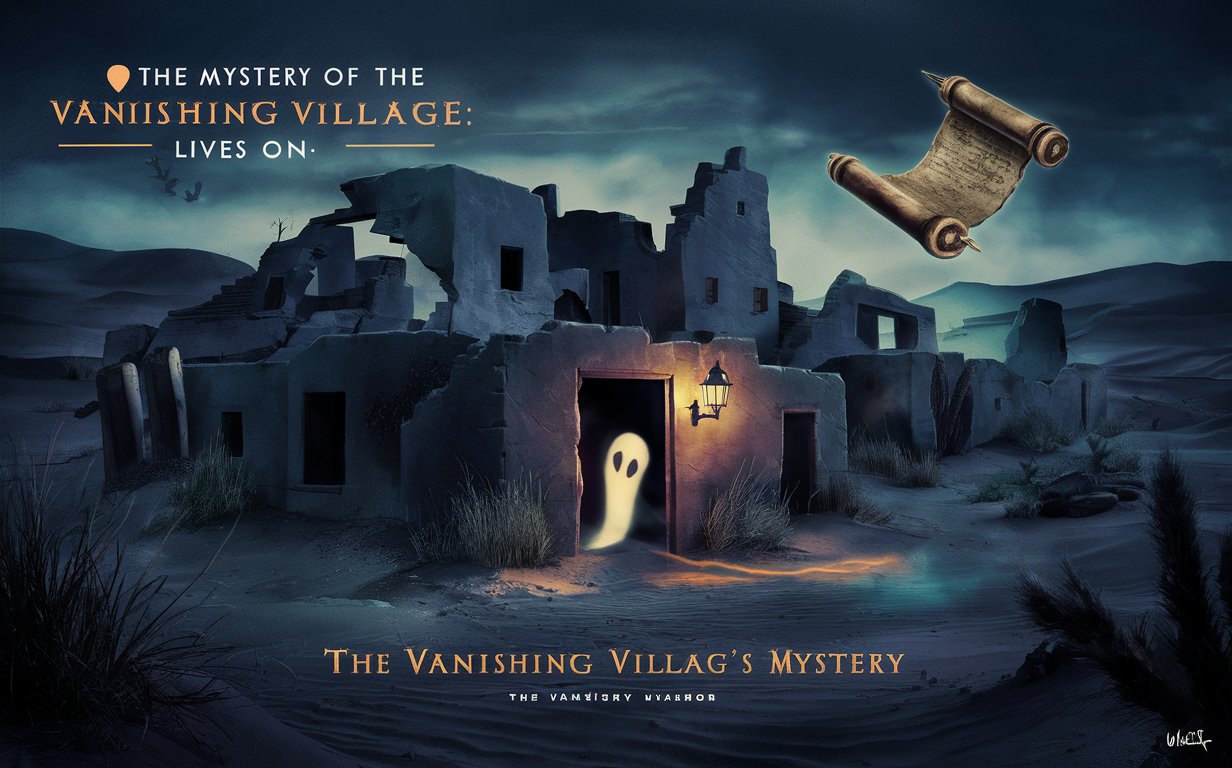The Story Behind the Cursed Ruby of the Black Prince

The Cursed Ruby of the Black Prince is one of the most infamous jewels in the world, known not only for its stunning beauty and historical significance but also for the curse that surrounds it. This cursed gemstone has passed through the hands of monarchs, warlords, and adventurers, each of whom has faced misfortune, tragedy, and sometimes even death. The stone’s dark reputation has only added to its allure, and its story is woven with tales of betrayal, war, and untimely deaths. But what is the truth behind the so-called "curse" of this iconic gem?
The Black Prince's Ruby is not, in fact, a ruby at all but a large, flawless red spinel. Regardless of its official name, it is inextricably linked to the history of England's monarchy, beginning with its legendary acquisition by Edward, the Black Prince, in the 14th century. This article will explore the mysterious origins of the gem, its dark history, and why it’s believed to be cursed.
The Origins of the Black Prince's Ruby
The Black Prince's Ruby has an extensive and dramatic history, which begins long before it became associated with Edward of Woodstock, known as the Black Prince. The gem was originally a prized possession in the Muslim world, where it was likely part of the treasures of a Persian or Indian king. It is believed to have been mined in Central Asia, possibly in modern-day Afghanistan or the surrounding regions.
The ruby (or spinel) first became widely known in Europe after being taken from the Sultan of Granada during the Reconquista in the late 14th century. According to historical accounts, the jewel came into Edward's possession during his military campaigns in Spain.
Edward, the Black Prince, was a key figure in the Hundred Years' War between England and France. In 1367, during the Battle of Najera in Spain, Edward was victorious against the Castilian army, and among the spoils of war was the remarkable gemstone. The jewel was said to have been part of a larger collection of treasures that Edward brought back to England.
The Black Prince, already famed for his military prowess, wore the gem in his helmet during battle, and it became a symbol of his martial valor. Its association with Edward added to its mystique, and it would go on to have a lasting place in the crown jewels of England.
The Cursed History Begins: Tragedy Strikes
Edward, the Black Prince, died in 1376 at the age of 45—just a year before he was set to inherit the throne of England from his father, King Edward III. His early death has long been the subject of speculation, with some suggesting that the relentless warfare and stress of his military campaigns, compounded by illness, led to his untimely passing. In any case, the Black Prince's death marked the beginning of a series of unfortunate events for those who came into possession of the gemstone.
As the Black Prince had no surviving male heirs, the ruby passed to his son, Richard II. But the legacy of misfortune continued. Richard II, a young and inexperienced king, was deposed in 1399 by his cousin, Henry Bolingbroke, who became King Henry IV. Richard was imprisoned in the Tower of London and eventually died under mysterious circumstances—likely starved to death, though the exact cause remains uncertain. The ruby, however, continued its journey through English history, following a path that seemed to curse all who owned it.
The Ruby's Role in England's Crown Jewels
The Black Prince's Ruby would eventually become part of the English Crown Jewels, being incorporated into the Imperial State Crown. The jewel itself was set in the center of the crown, surrounded by other precious stones, including diamonds, sapphires, and emeralds. But as it passed through the hands of English monarchs, it became linked to more instances of misfortune and death.
One of the most dramatic episodes of the ruby’s curse occurred in 1483 during the reign of King Richard III. Richard, a controversial figure in English history, famously died at the Battle of Bosworth Field in 1485, fighting to retain his throne against the forces of Henry Tudor, who would become Henry VII. Richard was killed in battle, and his army was decisively defeated. The ruby, however, remained part of the crown jewels and continued its journey through the tumultuous centuries of English history.
The Curse and Its Legendary Impact
Over time, the Black Prince's Ruby became infamous not only for its beauty and history but also for the apparent misfortune that befell those who owned it. A common theme surrounding the ruby’s curse is that its possessors, particularly those with royal blood, were often met with untimely death, imprisonment, or disgrace. Here are some of the more notable instances:
The Death of King Henry V
One of the more tragic tales linked to the cursed ruby involves King Henry V. Famous for his victory at the Battle of Agincourt in 1415, Henry V was a warrior king who led England to great military success. However, in 1422, just six years after his famed victory, Henry died of dysentery at the age of 35. Some believed that his early death was a consequence of the cursed ruby, which had been passed to his family through the royal lineage.
The Execution of King Charles I
The legend of the cursed ruby continued into the 17th century with the execution of King Charles I in 1649. The English Civil War, which pitted the forces of the monarchy against Parliament, culminated in the king’s trial and subsequent execution. While there is no direct connection between the ruby and Charles I’s demise, some claim that the gem’s presence in the crown jewels contributed to the monarch’s downfall, which marked a dramatic and bloody turning point in English history.
The Great Fire of London (1666)
Another event associated with the cursed ruby is the Great Fire of London in 1666. During the fire, which destroyed much of London, the crown jewels, including the ruby, were stored at the Tower of London. Some stories suggest that the fire was somehow linked to the jewel’s curse, though the crown jewels themselves were ultimately saved. Still, many saw the fire as a symbol of the destructive power of the curse.
Modern Day and the Ruby's Fate
Despite its dark history, the Black Prince’s Ruby has remained an integral part of England’s royal legacy. Today, the ruby is housed in the British Crown Jewels collection and remains on display in the Tower of London. It is set in the Imperial State Crown, which is worn by the monarch during the State Opening of Parliament and other significant ceremonies.
While the curse surrounding the gem is not often discussed officially, the stories and legends persist among historians, treasure hunters, and royal watchers. Whether or not the ruby is truly cursed is a matter of interpretation, but the tragic and often violent events associated with the gem’s history have certainly contributed to its mysterious allure.
Conclusion: The Legacy of the Cursed Ruby
The Black Prince’s Ruby is far more than just a beautiful gemstone; it is a symbol of England’s turbulent and often tragic royal history. From the wars of the 14th century to the execution of kings and the destruction of a city, the ruby seems to have witnessed—or perhaps even played a role in—the most significant events of England’s monarchy.
Whether you believe in the curse or not, the history of the Black Prince’s Ruby continues to fascinate and intrigue. It remains a testament to the power of myth and the deep-seated human desire to understand the forces—be they fate, fortune, or something more mysterious—that shape our lives. The ruby’s dark past, wrapped in tragedy and legend, only adds to its status as one of the most infamous jewels in history.



Post Comment